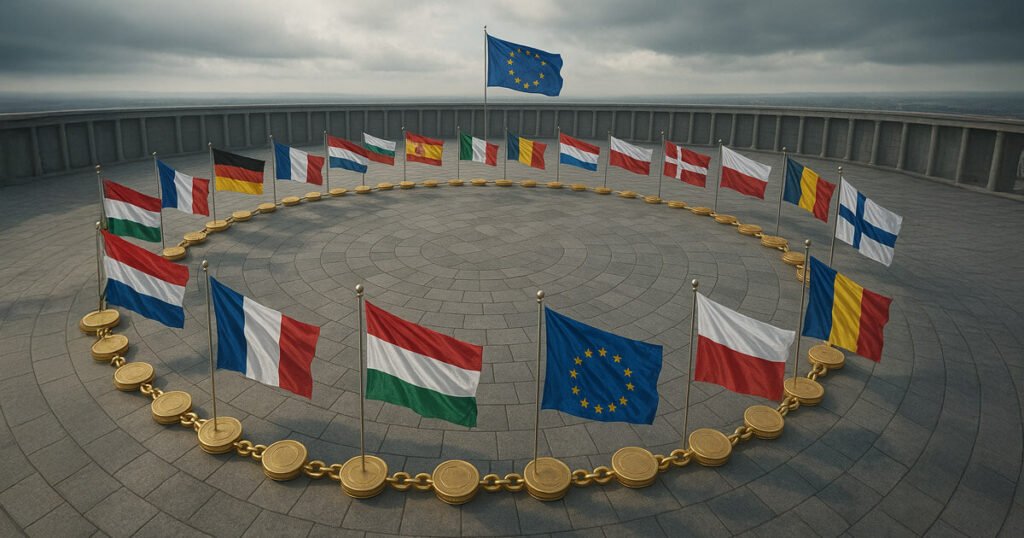The Rise of Crypto Regulation: An Overview of MiCA Approvals in the EU
In a decisive move towards establishing a secure regulatory environment for the digital asset sector, the European Union’s Markets in Crypto-Assets (MiCA) framework has granted regulatory approval to over 50 entities in its first six months. As of July 7, Patrick Hansen from Circle highlighted data from the European Securities and Markets Authority (ESMA), which confirmed that a total of 53 firms have successfully secured MiCA licenses since the regulation was instituted. These licenses empower companies to "passport" their services across 30 European Economic Area (EEA) countries, eliminating the need for additional approvals in individual jurisdictions. This development exemplifies a pivotal milestone for compliance within the digital asset landscape, signaling a growing acceptance and regulation of cryptocurrency in Europe.
A New Era for Stablecoins
Among the authorized entities, 14 firms have received the green light to issue stablecoins or e-money tokens (EMTs) across seven European Union countries. Prominent names in this category include Circle, Crypto.com, Societe Generale, Stablemint, Quantoz, and StablR. Collectively, these licensed issuers account for 20 fiat-backed stablecoins, with a notable distribution: 12 pegged to the euro, seven to the US dollar, and one associated with the Czech koruna. However, Tether, the issuer of USDT, is conspicuously absent from the list, having failed to meet MiCA’s regulatory requirements. As a result, Tether has faced delisting from several EU-based exchanges like Coinbase and Crypto.com, highlighting the increasing pressure on crypto players to adhere to regulations.
Expanding the Landscape of Crypto Service Providers
The MiCA framework does not solely focus on stablecoin issuers; it has also extended regulatory approval to 39 crypto-asset service providers (CASPs). The distribution of these licenses has varied across several EU and EEA nations, with Germany being the leader, issuing 12 licenses, followed closely by the Netherlands with 11, and Malta with five. The licensed CASPs showcase a diverse array of institutions, ranging from traditional banks to innovative fintech companies and crypto-native firms. Notable names include BBVA, Robinhood, Coinbase, Kraken, and OKX. However, major market player Binance, recognized as the most extensive crypto trading platform by volume, has yet to receive a MiCA license, reflecting the complexities of meeting compliance obligations in the evolving regulatory landscape.
Compliance: The Driving Force for Market Participation
The swift issuance of MiCA licenses to various entities underscores a robust momentum towards compliance in the digital asset market. This is critical, especially as regulators around the globe increase scrutiny on cryptocurrency activities. The regulation aims to safeguard investors while fostering innovation and competition in the crypto marketplace. By enabling licensed firms to operate seamlessly across the EEA, MiCA is establishing a level playing field for companies, thereby enhancing consumer trust and protecting against potential financial crimes such as fraud and money laundering. This regulatory framework is essential for ensuring that as the crypto market expands, it does so within a secure and sustainable governance structure.
The Road Ahead for Regulatory Engagement
With the hiring of Gillian Lynch as Binance’s new head of Europe and the UK, the exchange appears committed to enhancing its regulatory compliance efforts across these pivotal markets. Lynch’s expertise will likely be instrumental in guiding Binance to navigate the complex landscape of cryptocurrency regulations and align its operations with MiCA requirements. The proactive approach by large firms underscores the significance of adapting to the evolving regulatory climate while continuing to innovate within the fintech sphere. As more companies strive for licensing, the outlook suggests that regulatory compliance will become a determining factor for participation in the competitive crypto landscape.
Conclusion: MiCA’s Impact on the Future of Crypto in Europe
The success of more than 50 institutions in obtaining MiCA licenses marks a transformative phase in the European crypto sector, indicating an important shift towards formal regulation and oversight. This comprehensive framework not only streamlines operations for licensed firms but also establishes an essential framework for investor protection and market integrity. As the industry continues to mature, regulatory compliance will play a pivotal role in shaping the future of cryptocurrency in Europe and beyond. As observed, the increasing interest in regulatory engagement from key players is set to further instill trust in digital assets, ensuring that the sector can evolve while maintaining robust safeguards for its users.


